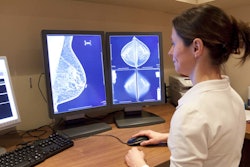As the new year begins, Signify Research’s Imaging IT and AI team shares their top five predictions for the market in 2025. These top five trends are also presented in our latest infographic.

Trend 1 – Market consolidation is coming in 2025
The discussion of consolidation has plagued the medical AI market for a number of years, yet most vendors have withstood the pressures of the market, and new entrants are appearing each year. However, 2025 follows a second tough year for venture capital funding, against a backdrop whereby key market questions such as “Who will pay for AI?” remain unclear to most of the market. As a result, only a small handful are able to boast break-even status, thus, the inevitability of consolidation in 2025 is apparent. AI platform vendors, larger AI independent software vendors (ISVs), modality vendors, and adjacent vendors are all probable acquirers, seeking to expand capability, geographical reach or optimize existing businesses.
From an imaging IT perspective, although the maturity of the market is high, so too is the level of competition, with new vendors entering the market throughout 2025 with the ambition to carve out a piece of the market for themselves. In addition to the competitive dynamics, the prospects of acquisitions will be intensified as deals across mature markets become larger, alongside the slowdown in growth in key markets such as the US. Mid to large-sized imaging IT vendors may look to round out existing portfolios with specialist tools or cloud-native architecture, seeking prospective opportunities across areas such as reporting, operational workflow, and cloud-native PACS.
Trend 2 - Increased size and complexity of radiology IT deals
Investment and deals witnessed across the radiology IT market continue to transform from a departmental into a more enterprise-focused strategy, and as a result, the contract landscape is reflecting this change. The occurrence of multibillion-dollar radiology IT contracts will become more commonplace throughout 2025, with regional and national harmonization of imaging IT solutions being a driving factor behind this.
Not only is the scale of contracts increasing, but the complexity. Deals observed in mature markets such as the U.S. and Western Europe are increasingly requesting capability beyond radiology, with specialities such as breast imaging, orthopaedics, pathology, ophthalmology, and point-of-care-ultrasound (POCUS) included in requests for proposals (RFPs) and contracts. Beyond speciality tools, providers are also including specialist tools in the radiology domain, such as AI (AI tools or orchestration platforms) and integration of reporting or auto impression tools for example.
 Amy Thompson of Signify Research.
Amy Thompson of Signify Research.
These larger deals will begin to evolve the competitive dynamic, with fewer but larger deals, the significance of winning or losing these deals will not only influence market standing but could also determine a vendor’s viability, prompting market exit (as discussed in trend 1). Therefore, vendors' strategies are anticipated to develop beyond the technological capability and integration of partners. Service offerings will become the opportunity for vendors to try and differentiate from their competitors.
Trend 3 – Use of generative AI will ramp up in 2025
The presence of generative AI at RSNA 2024 was a clear signal of the potential of foundation models and vendors’ ambitions to explore and invest in generative AI strategies. For imaging IT vendors, operational use cases of generative AI will be the primary focus to help drive further efficiencies for hospitals and radiologists’ short term. For example, generating automatic impressions to streamline radiologist reporting, or the availability of patient summarization to support radiologists navigate the depth of patient information and present relevant information for the specific case that is being read.
From an AI vendor perspective, operational use cases are still expected. However, the focus for these vendors also, and primarily will be on the clinical opportunity. Although generative AI diagnostic tools cannot be used in a clinical setting yet due to regulation, vendors have begun exploring the ability to leverage foundation models to streamline product development. With the increased pressures on the AI vendor market, this creates an opportunity to reduce internal costs by requiring less data to develop products, as well as bring products to market faster -- a powerful combination, if executed well.
Across both vendor types, products released this year are expected to be increasingly positioned as “generative AI-based,” as vendors seek to capitalize on the market intrigue and “hype.”
Trend 4 - Greater focus on multimodal AI
The majority of medical imaging AI available today has been developed using imaging data only, with limited integration of additional clinical information such as clinical notes, patient records and lab results. Despite the undeniable value of multimodal AI -- AI tools developed with imaging and lab data alongside clinical notes and records -- such as driving more accurate diagnoses and personalized treatment, the unstructured data, as well as the cost of obtaining reasonable volumes of different types of data, poses operational and financial challenges for AI vendors.
With the emergence of large language models (LLMs) in healthcare, there are new possibilities for multimodal AI. LLMs allow data to be extracted from natural language sources (unstructured) such as clinical notes and reports. As such, multimodal AI can be more easily achieved. As the competitive market intensifies and vendors continue to assess how they can differentiate in the market and generate value for hospitals and radiologists, multimodal AI is one avenue AI vendors are anticipated to invest in and evolve strategies to align to in 2025.
Trend 5 – Increased Focus on AI regulation
The regulatory framework that surrounds medical devices and therefore medical imaging AI is one of the key barriers to scaling AI adoption. For example, the transition from Medical Device Directive (MDD) to Medical Device Regulation (MDR) in Europe has caused significant delays for vendors seeking first-time approval or updating an existing product's categorization to MDR. In the U.S., although the approval of narrow AI does not hold the same challenges faced in the EU, there is however limitation for comprehensive AI tools, whereby vendors are required to seek approval for individual findings. That process could take years depending on the vendors' product(s).
As interest grows to evaluate AI capability beyond narrow point solutions, such as comprehensive AI, autonomous AI and generative AI, the regulatory market is not currently set up in a way to nurture such market intrigue. Therefore, there is a risk of stalling innovation and clinical adoption in the market.
This has been recognized in the market, with vendors seeking to work with regulatory bodies to help support them in understanding how best to regulate and monitor advanced models. This coupled with the election of Donald Trump could play an important role in overhauling the existing regulatory framework in the U.S. The appointment of Elon Musk and Robert F. Kennedy Jr. are both positive signals of Trump’s ambition to lighten U.S. government regulation, with all parties calling for radical reform and lighter regulation.
Amy Thompson is research manager leading the AI in Medical Imaging and Imaging IT team at Signify Research, an independent supplier of market intelligence and consultancy to the global healthcare technology industry. Signify's major coverage areas are healthcare IT, medical imaging, and digital health medical imaging, clinical care, digital health, diagnostic and life sciences, healthcare IT and AI in healthcare.
The comments and observations expressed do not necessarily reflect the opinions of AuntMinnie.com or AuntMinnieEurope.com, nor should they be construed as an endorsement or admonishment of any particular vendor, analyst, industry consultant, or consulting group.



















